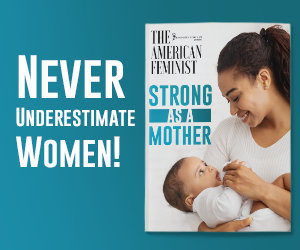The fertility industry has been helpful to parents who are having trouble having a baby, but the pro-life community has long been concerned about the fallout: thousands, perhaps millions of human embryos — unique human beings — who are frozen on ice.
What will happen to those unborn children? World Magazine takes a look at this very serious question:
More women are using donated eggs for in vitro fertilization (IVF) and more healthy babies are being born through the process, according to a study released in October. While this is good news, the process also creates more embryos than can be implanted, leaving hundreds of thousands of frozen embryos in fertility clinics.
For women with viable eggs who cannot become pregnant, IVF involves extracting their own eggs, fertilizing them and then re-implanting them in the uterus. Women who do not have viable eggs go through a similar IVF process using eggs from other women. The number of women who attempted IVF from another woman’s eggs increased from 10,801 in 2000 to 18,306 in 2010. The percentage of healthy outcomes from donated eggs, defined as a baby born after 37 weeks weighing 5.5 pounds or more, increased from 18.5 percent in 2000 to 24.4 percent in 2010.
The study also found that women are increasingly implanting only one embryo in an IVF cycle. Because doctors are unable to predict with certainty which embryos have the best chance of resulting in a healthy baby, many women implant more than one embryo during an IVF cycle, increasing the odds that at least one of the embryos will survive. However, between 2000 and 2010, the percentage of women who transferred only one embryo, and thereby avoided the possibility of multiple births, increased from less than 1 percent to 15 percent.
However, the process is wrought with ethical controversy, as many clients don’t know what to do with the extra embryos created: An estimated 600,000 frozen embryos are stored in fertility clinics throughout the United States. “The vast majority of people don’t have a plan,” says Daniel Nehrbass, executive director of Nightlight Christian Adoptions, an organization that does embryo adoptions. “They don’t want to destroy them because there is finality to that. So they store them and the years go by.” In the face of many grey ethical issues, including the question of whether couples should pursue IVF at all, Nehrbass said NightLight sees two things as black and white: “Embryos are human life, and they deserve a chance to be born.”
Jeffrey Keenan, MD, the Medical Director for the National Embryo Donation Center, responds in an email to LifeNews:
“Currently there are more than 600,000 cryopreserved embryos in liquid nitrogen tanks in U.S. fertility clinics alone. Although some 80 percent of couples say that they plan to use these for future reproduction, the reality is that a large percentage of these will never be thawed and replaced in the genetic mother’s uterus. Because cryopreservation has only been performed for about 25 years, no one really knows what the ultimate fate of these embryos will be. It is possible that many will eventually be destroyed, donated to destructive and unfruitful embryonic stem cell research or even left as a sort of ‘inheritance’ for the children (genetic siblings).
“What created this problem is the marked improvement in IVF success rates, an increase in the number of procedures and the more prevalent use of donor eggs as noted in this article (donors generally produce more eggs of better quality with higher pregnancy rates). At the same time, most clinics have not changed their practices which typically involved inseminating ALL eggs regardless of the number or likelihood that there will be additional embryos remaining long after the couple has completed their family building plans.
CLICK LIKE IF YOU’RE PRO-LIFE!
“Unfortunately, the American College of Obstetrics and Gynecology and other professional bodies do not even consider an embryo a viable being until it has implanted in the uterus. This view has at least contributed to the almost complete disregard for the lives of embryos by most members of our profession.
“The National Embryo Donation Center was founded with the assistance of the CMDA and performed its first embryo transfers in 2003. So far, more than 400 children have been born or are awaiting birth as a result of the NEDC’s efforts, making it the largest and most successful provider of embryo donation/adoption services in the world. The NEDC advocates limiting the number of eggs inseminated with each IVF cycle, as well as increasing the excellent alternative of freezing eggs rather than embryos. NEDC is currently seeking affiliates in multiple cities around the country to perform adoptive embryo transfers.”







